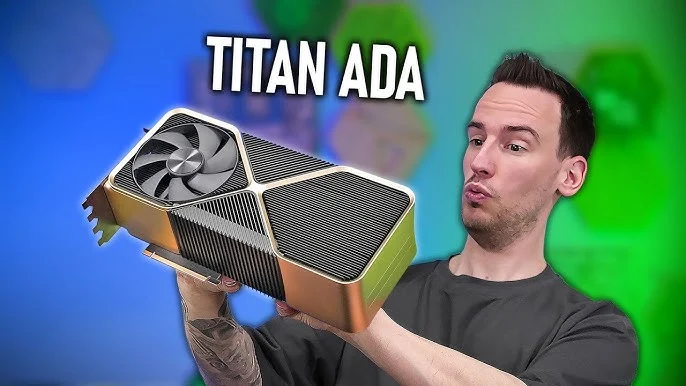Key Takeaways
1. The Titan Ada was a fully developed Nvidia graphics card that was ultimately discarded before launch, intended to be the flagship of the Ada Lovelace generation.
2. It features a fully unlocked AD102 chip with 18,432 CUDA cores and 48 GB of GDDR6X memory, surpassing the RTX 4090 in both performance and design.
3. Benchmark tests showed the Titan Ada outperforming the RTX 4090 by 10-15% while offering better performance-per-watt, but it was less compatible with newer games due to driver limitations.
4. Reasons for its cancellation include potential market positioning issues with the RTX 5090, its large size and complex design, and a lack of strong performance-per-dollar ratio for consumer applications.
5. The Titan Ada represents a significant yet unrealized engineering achievement in GPU history, highlighting Nvidia’s capabilities beyond what was released to consumers.
In a surprising turn of events, the much-discussed Nvidia graphics card—the Titan Ada—has been uncovered and evaluated, revealing a GPU that was entirely developed but ultimately discarded prior to its launch. This card was intended to be the pinnacle of Nvidia’s Ada Lovelace generation, set to surpass the RTX 4090 in performance and aesthetics, giving us a peek at what could have truly represented the flagship of the RTX 40-series.
Specifications and Features
The Titan Ada operates on a fully unlocked AD102 chip, which is the same die found in the RTX 4090 but with additional hardware enabled. It boasts 18,432 CUDA cores—12.5% more than the 4090—and includes a whopping 48 GB of GDDR6X memory, twice as much as Nvidia’s most advanced consumer GPU to date. Despite its enormous capabilities, the design of the Titan Ada is sleek, featuring a large quad-slot cooler, two 12VHPWR connectors, and an attractive Titan-logo light. When compared to the already sizable RTX 4090, the Titan Ada is not only wider and heavier but also more imposing in every aspect.
Benchmark Performance
In various benchmark evaluations, such as 3DMark Time Spy Extreme and 3DMark Speedway, the Titan Ada consistently achieved remarkable scores. It outperformed the RTX 4090 by 10–15% while only consuming about 14% more power, showcasing a significant enhancement in performance-per-watt. For instance, in Remnant 2, it secured an average of 82 FPS, which is 10% above the RTX 4090’s performance, and in Cyberpunk 2077, it provided a 22% increase. Efficiency tests revealed that the Titan Ada slightly surpassed both the 4090 and even the newer RTX 5090 in terms of FPS-per-watt, a unique occurrence in high-end GPU assessments.
Reasons for Its Cancellation
Nonetheless, there are some concerns. The GPU was assessed with a 2023 driver, which restricts compatibility with newer games—numerous titles either failed to start or showed performance issues. Furthermore, while the RTX 5090 still outperformed the Titan Ada in absolute terms (by 11–26% based on the test), the Titan Ada’s impressive performance highlighted a surprisingly small difference between the two generations.
So, what caused this monster to never hit the shelves?
There are several plausible explanations. Firstly, from a product positioning perspective, launching a Titan Ada too close to the 5090—especially with only minor improvements—could have undermined Nvidia’s next-gen flagship. The success of the RTX 5090 might have been harder to defend had the Titan Ada been released first. Secondly, the card’s large size and complex design, particularly its substantial quad-slot cooler, would have presented challenges for both system builders and end users. The Titan Ada is physically daunting and not practical for many setups.
Lastly, and possibly most importantly, Nvidia might have concluded that the performance-per-dollar ratio wasn’t strong enough to warrant a commercial release. The card seemed better suited for high-end professional or workstation applications, but would have likely needed specialized drivers and support infrastructure that Nvidia wasn’t prepared to provide for a single product launch.
While the Titan Ada may never grace retail shelves, its existence illustrates that Nvidia had taken Ada Lovelace further than consumers ever expected. It remains an intriguing “what-if” scenario in GPU history—an engineering feat crafted to conquer, yet ultimately left unexploited.
Expect more teardown videos and in-depth analysis of the Titan Ada’s internals and cooling systems in the future. For now, this insight into the card-that-never-came gives fans a rare glimpse at a phantom within Nvidia’s realm.
Source:
Link


Leave a Reply